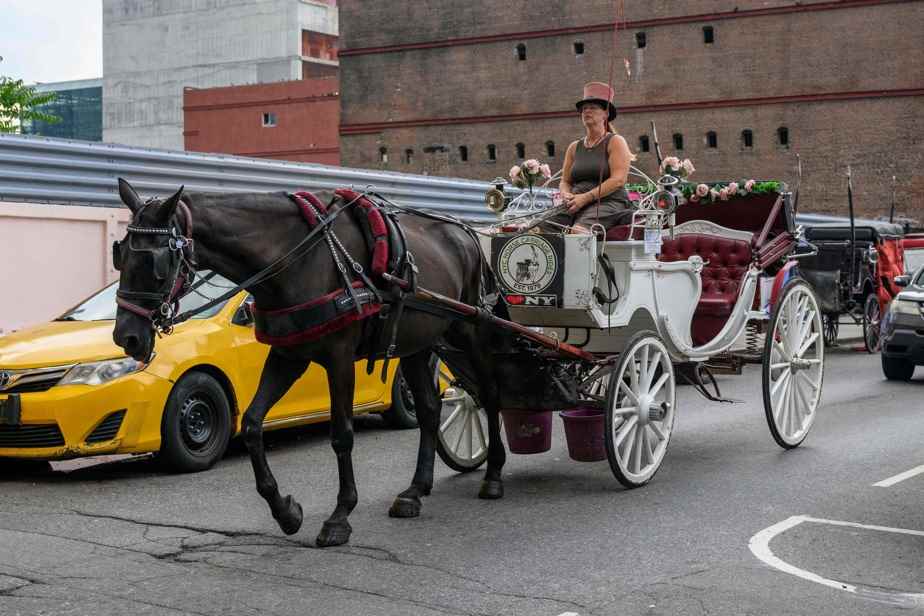(New York) Like yellow cabs, the Statue of Liberty or Broadway, horse-drawn carriages are New York clichés. But these tourist walks around Central Park are in the sights of elected officials and animal defenders who would prefer electric carts.
Posted at 7:00 a.m.
“Manhattan is probably the worst place on the planet for a horse to work in, traffic, noise, pollution and heat,” protests Robert Holden, a 71-year-old New York City Councilman and author of a text which would require the replacement of horse-drawn carriages by electric vehicles by June 2024.
For years now, more and more animal rights activists in the United States have wanted to put an end to this tourist attraction, which has existed since the 19th century around the green lung of Manhattan.
New York now has 130 coachmen who share 68 licenses and some 200 horses sheltered in municipal stables.
Opponents of horse-drawn carriages mobilized in early August, in particular some activists from the association Peta (People for the Ethical Treatment of Animals), when a horse suddenly collapsed one hot afternoon on the roadway of the huge 9e Manhattan avenue, lined with skyscrapers.
“Cruelty” and “barbarism”
A video on social media shows the animal on the ground while angry motorists tell him to get up.
A micro-demonstration against the “cruelty” of horse-drawn carriages then brought together 15 people. American model Bella Hadid judged on Instagram that these walks were “barbaric”. The fashion star urged the New York City Council to pass Mr Holden’s bill.
For animal advocates, New York horses live in poor conditions, suffer from malnutrition and dehydration, are terrorized by car traffic and work hard.
“They are treated like machines and they are not machines”, thunders Edita Birnkrant, director of an animalist group, NYCLASS, who thinks that horse-drawn carriages have nothing to do in “a modern New York”.
On the contrary, the operators ensure that these horses are well treated and that their sector is closely monitored by the city’s health authorities.
In fact, they are prohibited from working more than nine hours a day, at more than 32 degrees in summer and less than 7 degrees in winter.
The horses “are happy and healthy. You can’t force a 1,500-pound (680 kg) animal to do what it doesn’t want to do,” insists Christina Hansen, coachwoman in New York for ten years and whose horse Oreo is entitled to five weeks of “leave. annual campaigns.
“Immoral” or “cultural”?
And then what would New York be without its horse-drawn carriages, questions this 42-year-old woman: “We are seen in the cinema and on TV. We’re as photogenic as the Empire State Building and the Statue of Liberty.”
In Central Park, where a 45-minute walk still costs $160, in one of the most expensive cities in the world, tourists are divided.
“Absolutely immoral! exclaims Briton Cailey Tyler, who is in favor of a ban, as does Maria Luzynska, a Polish woman for whom seeing horses “in the heat” gives New York “the worst impression”.
On the contrary, Argentina’s Marina Perry sees in it “a cultural dimension that has been going on for generations”.
Coach Christina Hansen explains that the sector is now “dominated by immigrants” from around twenty countries such as Italy, Ireland, Turkey, Brazil and Mexico.
A horse-drawn carriage driver can earn US$100,000 a year, she says.
Opposite, supporters of Mr. Holden’s bill are hoping for a vote in October. The text would have to gather 26 votes out of 51 and the last word will go to the mayor of New York Eric Adams.
A ban is far from certain as the coachmen are backed by the powerful municipal transport union and Mme Hansen doesn’t think anyone in New York wants an “electric golf cart” ride.
